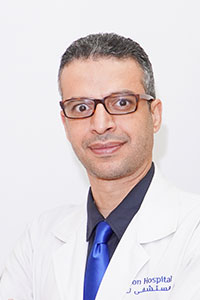

Department of Radiology & Imaging Sciences at London Hospital offers complete and comprehensive imaging solution to patients and takes care of all their needs in the best possible manner.
Digital Radiography (x-ray unit)
Routine x-rays of the body are performed for out-patients as well as in-patients with our Digital Radiography units.
Fluoroscopy Suite
This uses dynamic imaging to look at internal organs in the body using contrast media such as Barium, to observe the Gastrointenstinal System and iodinated contrast, to observe the Urinary System. Then, Special Radiological procedures are performed under fluoroscopy-Intravenous Urography (IVU),MicturatingCystoUrethrogram(MCUG), Barium studies for Esophagus, Stomach, Small and Large Intestines, Hysterosalpingography (HSG), Fistulography and Sinography.
Three Advanced Technology Ultrasound Units with Color Doppler Facilities
Ultrasound is a form of diagnostic imaging that does not use ionizing radiation. Instead, sound waves are used, which reflect from the body tissues giving an image on the screen. There are three main areas where Ultrasound is performed:
Multislice Computed Tomography (ct)
CT scanner used for examination of any part of the body. The CT is a specialized type of diagnostic imaging using x-rays, which is able to create cross-sectional imaging simulating ‘slices’ through the body. Whole body CT studies can be performed including CT angiography. Three dimensional imaging is also possible, for example, in orthopedic and facial reconstruction as well as in angiography. Biopsies can be performed under CT guidance to avoid the need for the patient to have an ‘open’ biopsy in an operating theatre.
Magnetic Resonance Imaging (mri) – 1.5 tesla
MRI uses magnets and radio waves to create an image of the body. It is extensively used for neurological and musculoskeletal imaging. MRI studies of brain, neck, chest, abdomen, and pelvis are also performed. There are possibilities for advanced studies like Diffusion Weighted Imaging, MR angiography, MR Venography, MR Cholangiopancreatography, MR Urography and MR spectroscopy. As MRI does not use ionizing radiation and can create detailed images of soft tissue, it can be used for the detection of many diseases. However, because of the magnetic field generated, it is not suitable as an imaging technique for patients who have pacemaker, metallic coils or other piece of ‘metal’ in their bodies.
Mammography Unit
Mammography is a specific type of imaging that uses a low dose x-ray system to examine breasts. Mammography is used to aid in the early detection and diagnosis of breast diseases.
